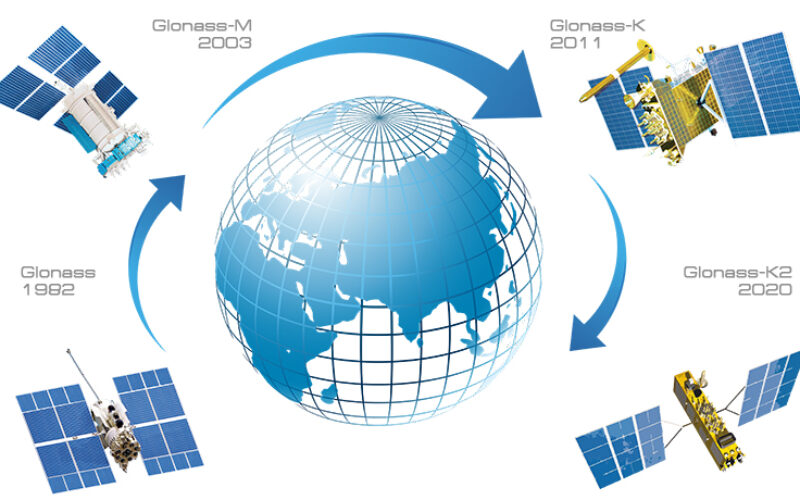GLONASS Development History

Development by the Soviet Union
In the late 1960s and early 1970s, the Soviet Union identified the need and benefits of developing a new satellite-based radio navigation system. Their existing Tsikada satellite navigation system, while highly accurate for stationary or slow-moving ships, required several hours of observation by the receiving station to fix a position, making it unusable for many navigation purposes and for the guidance of the new generation of ballistic missiles.
From 1968 to 1969, the research institutes of the Ministry of Defence, Academy of Sciences, and Soviet Navy cooperated to develop a single system for navigation of their air, land, sea, and space forces. This collaboration resulted in a 1970 document that established the requirements for such a system. Six years later, in December 1976, a plan for developing GLONASS was accepted in a Decision of the Central Committee of the CPSU and of the Council of Ministers of the USSR entitled “On Deployment of the Unified Space Navigation System GLONASS.”
From 1982 through April 1991, the Soviet Union successfully launched a total of 43 GLONASS-related satellites plus five test satellites. In 1991, twelve functional GLONASS satellites in two planes were available; enough to allow limited usage of the system.
Completion, then decay, under Russia
Following the disintegration of the Soviet Union in 1991, continued development of GLONASS was undertaken by the Russian Federation. It was declared operational on September 24, 1993 by then-president Boris Yeltsin; however the constellation was not completed until December 1995.
In the six years following completion, Russia was unable to maintain the system. By April 2002, this resulted in only eight satellites remaining in operation, which rendered the system almost useless as a global navigation aid.
Restoration and modernization
With GLONASS falling rapidly into disrepair, a special-purpose federal program named “Global Navigation System” was undertaken by the Russian government on August 20, 2001. According to it, the GLONASS system was to be restored to fully deployed status (i.e. 24 satellites in orbit and continuous global coverage) by 2011.
The New York Times reported in April 2007 that Russia had committed to accelerated launches, with eight satellites scheduled to be orbited in 2007 and a goal of reaching global coverage in 2009. Microcom Systems reported on its website that two launches, in September and December 2007, would lift the final six second-generation satellites, and that April 2008 will see the first launch of two third-generation satellites.
The 2007 launches occurred on 26 October and 25 December. Both launches were successful, orbiting six satellites altogether. Following the launches, Russia’s First Deputy Prime Minister Sergei Ivanov predicted that the launches would bring the GLONASS satellite fleet to up 18 satellites, the number necessary to provide navigation services over the entire Russian territory, and repeated that the system would have the required 24 satellites for worldwide coverage by 2010. Once all of these satellites are fully commissioned and set to healthy, GLONASS signals will be available across 90 percent of Russia and 80 percent of the globe.
Six new GLONASS satellites were added to the network in 2008. The first third generation (GLONASS-K) satellites are set to be launched in 2009. The head of Russian Space Agency, Anatoly Perminov said in September, 2008, that the number of satellites in the GLONASS network would be increased to 30 by 2011.
Cooperation with the Indian government
In January 2004 the Russian Space Agency (RSA) announced a joint venture deal with India’s space agency, the Indian Space Research Organization, wherein the two government agencies would collaborate to restore the system to constant coverage of Russian and Indian territory by 2008 with 18 satellites, and be fully operational with all 24 satellites by 2010.
Details announced in mid-2005 reported that Russia would build the satellites and that between 2006 and 2008 two satellites would be launched from India’s Satish Dhawan Space Centre in Andhra Pradesh state, using the Indian Geosynchronous Satellite Launch Vehicle (GSLV) rockets. As of April 2007, India has yet to launch any satellites as part of this project.
During a December 2005 summit between Indian Prime Minister Manmohan Singh and Russian President Vladimir Putin, it was agreed that India would share some of the development costs of the GLONASS-K series and launch two of the new satellites from India, in return for access to the HP signal.
Civilian signals made officially available
On May 18, 2007, Russian president Vladimir Putin signed a decree officially providing open access to the civilian navigation signals of the GLONASS system, to Russian and foreign consumers free of charge and without limitations. The Russian president also directed the Federal Space Agency to coordinating work to maintain, develop and enable the system for civilian and commercial needs.


